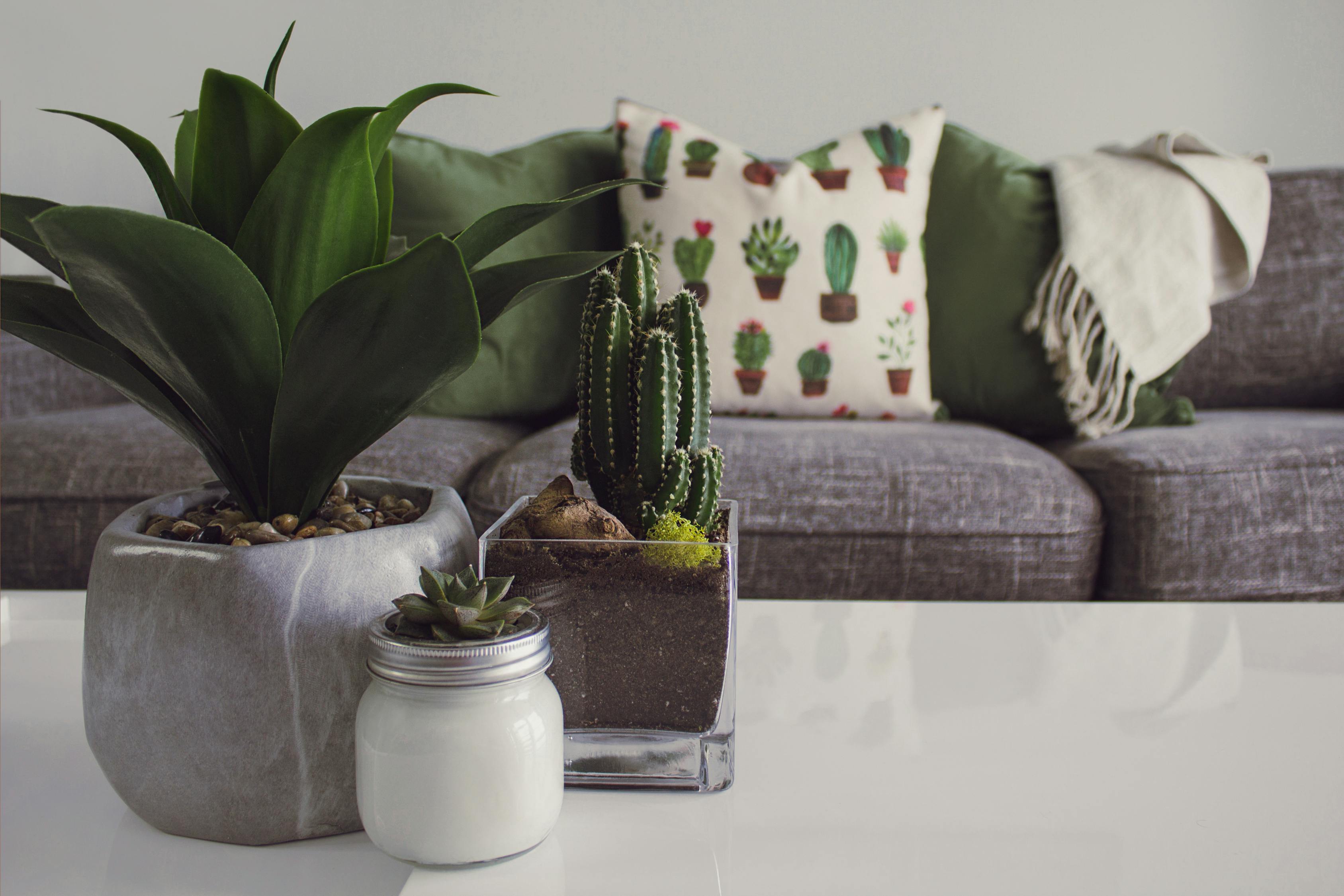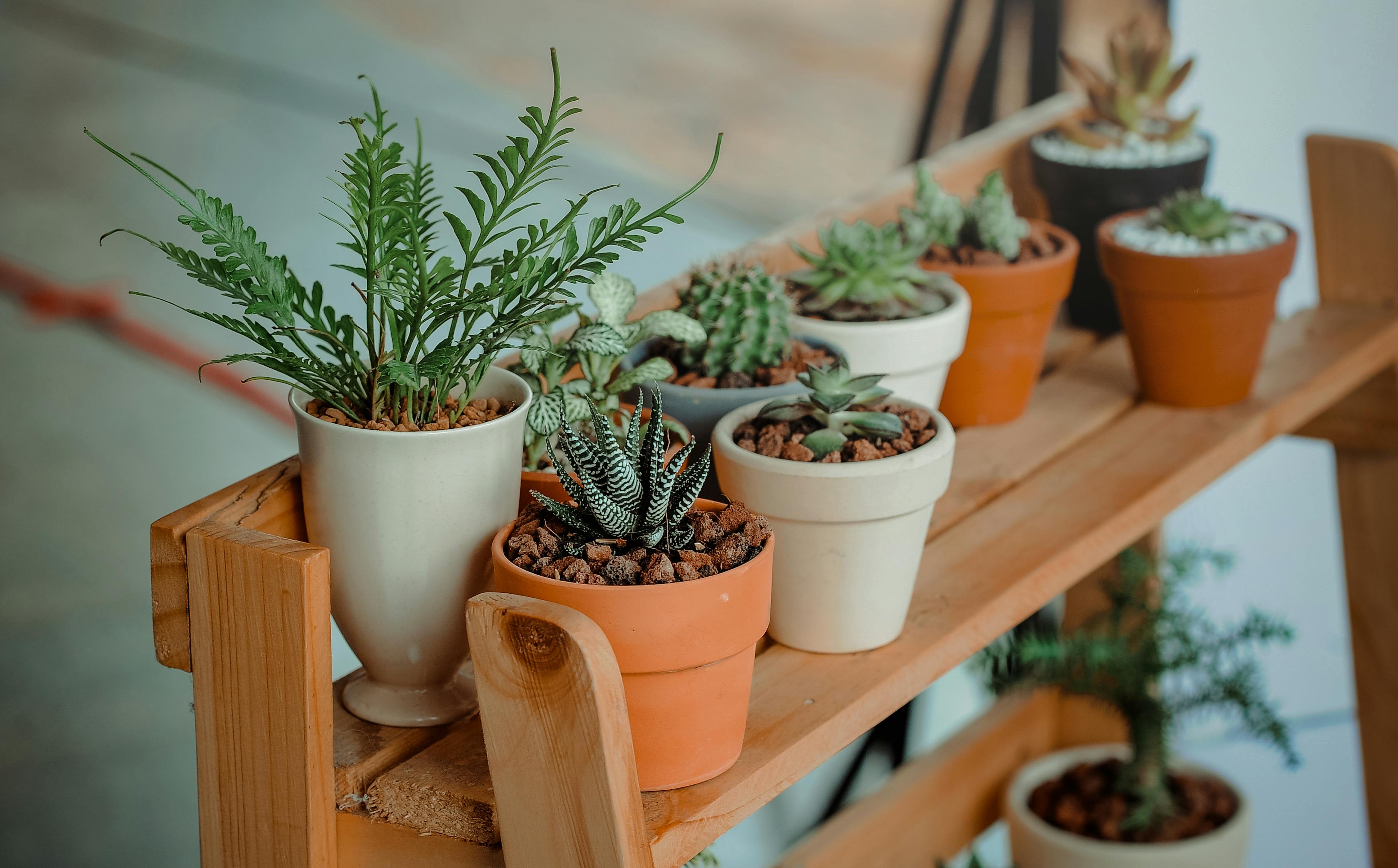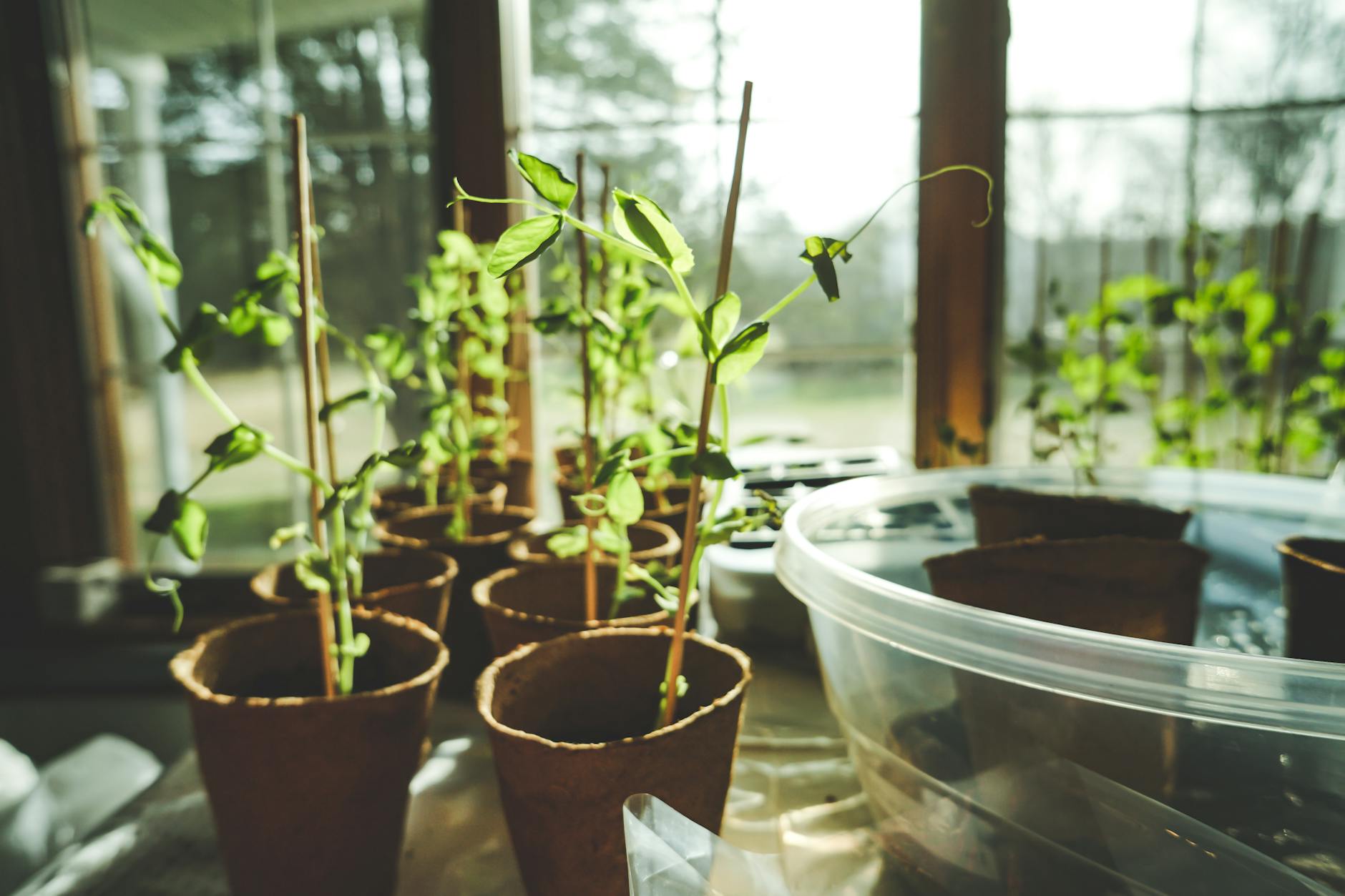image via: maxpixel.net
Growing plants indoors doesn't seem to be for everybody. Or at least, there are always those people who say that they kill all their houseplants. Yet, even those with brown thumbs can learn to grow plants indoors if they follow a loose schedule and consider the simple requirements of plants. Maybe the real question is: Why should they bother?
It turns out that plants provide much more than just aesthetic appeal. If the self-described brown thumbs knew some interesting facts about growing plants indoors, they just might reconsider. They would find out that if they select the right indoor plants, they just can't go wrong. Well, it may just take some concerted effort for things to go wrong. However, the many benefits reaped from the minimal effort of growing plants indoors are truly impressive. You don't even have to sow any seeds to reap the rewards unless you want to.
Ancient Beginnings
image source: Pexels
Growing plants indoors is an ancient hobby. Remnants of houseplants were found in terracotta pots in the ruins of Pompeii dating back to 79 AD with the eruption of Mount Vesuvius. Among the first certified botanical gardens were the Gardens of Vatican City founded by Pope Nicholas III in 1279 AD.
Many historians think that the Hanging Gardens of Babylon, one of the Seven Wonders of the World, were among the first examples of domesticated plants indoors. The Hanging Gardens were thought to be located inside the royal palace walls of Babylon and may have been created by King Nebuchadrezzar II around 561 BCE for his wife, Amytis, who missed the greenery of her homeland.
Growing plants indoors today
In modern times, we have the luxuries of climate-controlled homes, bigger, high-quality glass windows, and advanced artificial lighting. In addition, the selection of houseplants is off the charts since you can order them from all over the globe with a few clicks on your computer. With so many plants available, it becomes more necessary than ever to choose wisely, especially if you are new to growing plants indoors.
Recovering brown thumbs can consider "the cockroaches of the plant world" for low-light and nearly indestructible low-maintenance requirements. I'll dub the "comic sans" of the plant world, pothos vine, as a plant you would deserve an award for managing to kill unintentionally. It's as ubiquitous as that darned comic sans font but has far more merits. Let's look at some of those below.
The Many Benefits Of Growing Plants Indoors
image source: Pexels
Without getting too mystical, growing plants indoors brings people closer to nature. Some say there's a metaphysical connection to plants. Seeing them around us reminds us of nature's pure beauty. They can have a calming effect that helps us deal with stress.
Additionally, indoor plants remind us that we are connected with the earth and nature. That reminder is increasingly important, especially for urban dwellers. Now let's look at some specific health benefits.
Eliminating toxins
Most people spend around 90 percent of their time indoors, where the air quality tends to be lower than outside. Synthetic building materials, pesticides, household cleaners, and bathroom products can all contribute to indoor air pollution. While we may not be able to do much about building materials, growing plants indoors can remove toxins. They can remove 87 percent of air toxins in 24 hours and help remove allergens from the air.
Studies have shown that plants can remove low levels of formaldehyde, benzene, nitrogen oxides, and even carbon monoxide from the air. Even better, rooms containing plants have up to 60 percent fewer airborne molds and bacteria than rooms without plants, according to studies. Pothos vines and spider plants, both extremely easy to grow, are especially effective at removing formaldehyde molecules.
Cleaner and fresher air
Growing indoor plants brings fresh oxygen into your living space. They do the opposite of what we do, producing oxygen and absorbing carbon dioxide. That is, until nighttime, when they stop photosynthesizing and release some carbon dioxide. However, this isn't always the rule. Exceptions are orchids, bromeliads, snake plants, and succulents: They actually release oxygen at night and can help you sleep. Who knew?
Other plants that excel at cleaning the air and helping regulate humidity are Boston ferns, peace lilies, English ivy, areca, reed, and dwarf date palms. Aside from the palms, they are among the easiest of houseplants to grow.
Complexion and sinus benefits
Groups of houseplants increase beneficial humidity in dry homes, especially if you grow plants like ferns that prefer moist soil. The humidity can help keep your skin hydrated and your complexion looking better. It can also help with sinus issues. However, there are a small number of houseplants that can produce high pollen or even allergens that will make sinusitis worse. Avoid those, and your sinuses will thank you.
Increased productivity and concentration
Now here's where it gets really interesting. Studies have found that having healthy houseplants can increase your productivity and concentration at by up to 15 percent. If your boss knew this, they might make real living plants mandatory in the office because imagine what that percentage of more prolific work and clear thinking can do over time.
Mood enhancing and stress reducing
As it turns out, houseplants also work as antidepressants, boosting your mood and making a contribution to your overall happiness. They can reduce symptoms of fatigue and headaches, as well as coughs and dry skin. The presence of houseplants tends to make people more contemplative and self-reflective.
Lower noise pollution
A lesser-known benefit of growing plants indoors is they reduce noise pollution. We wouldn't question this when thinking about plants grown along highways the screen out the sounds of busy highways. They can do the same thing inside, absorbing, deflecting, and refracting sounds through their leaves. This can help, as more and more electronic devices are in constant use inside homes and offices.
Inexpensive and gorgeous decor
Now for those who find designing their homes a challenge, growing plants indoors is an easy and excellent way to decorate. Even the pickiest of designers must bow to the unparalleled beauty of mother nature. The best part is you won't pay designer prices for most plants, although a select few expensive plants would quickly empty your wallet. A centuries-old Bonsai tree once sold for $$$ million at the International Bonsai Convention in Takamatsu, Japan.
Interesting Facts About Growing Plants Indoors
image source: Pexels
Now, we'll take a look at some interesting facts that some may not realize. Even for avid gardeners, plants can surprise you in a great many ways.
Some plants prefer neglect
One misconception that has led many to believe growing plants indoors is difficult is that all plants need pampering. Actually, many plants will do better if left alone to dry out a bit. Overwatering is probably the biggest killer, and in the winter, most plants are not actively growing, so they don't want or need plant food. Also, you can also water them less frequently.
Some plants love artificial light
If you live or work inside a space with little or no natural light, it can have a depressing effect on your mood. Fortunately, you can grow some plants indoors that will thrive with basic fluorescent lighting, such as the popular African violets. If you want more variety, there are advanced LED grow lights that will allow you to create an indoor jungle.
Some plants love bathrooms
Some plants will thrive with the extra humidity, temperature fluctuations, and typically low light levels of a bathroom. As a bonus, they might benefit if you are a shower singer. Some studies have shown that plants respond positively to music, even if it's not exactly in tune. If you pick an air plant, you won't even have to water it. As long as you regularly use the bathroom for showers, it will absorb the humidity it requires. Orchids are another favorite for placing in bathrooms.
Houseplants don't need tropical temperatures
Although most houseplants originated from tropical locations, they don't have to live like hothouse flowers. Most can survive just fine with a nighttime temperature of 60 degrees Fahrenheit in the winter, and actually, it might be healthier for them. On the other hand, some plants thrive in heat, such as cacti and succulents. They will need brightly lit spaces and don't mind if it gets hot. However, nighttime dips in temperature can help some succulents and cacti to bloom.
Plants that live decades with no care
For those who really want to go to extremes and prefer not caring for their plants whatsoever, well that's also an option. Given a location with decent lighting and a good initial set-up, a closed terrarium can go for years with no care at all. These have been popular since Victorian times with Wardian cases. You can grow a self-contained ecosystem and only tend to it when you feel like it.
Flowers in the snow
If you love flowers -- and who doesn't? -- then you can have them if you select the right plants to grow indoors. Christmas cacti, African violets, amaryllis bulbs, and orchids can keep the flower show going all winter long when everything outside is buried in snow.
Plants like company
Grouping plants together increases humidity, which can help them grow in a dry home environment. It seems they like the company. Who knows, they may also communicate. We are just beginning to understand the way plants "talk" with each other and the world around them. One way we know that they do is because they will recognize nearby plants related to themselves with a sort of plant nepotism. They will lower their defenses and share nearby root space rather than acting competitively, as they will with "strangers."
Plants may prefer smaller spaces
Many plant owners will keep their plants in oversized pots, but plants may do better without the extra room. Some plants will flower more readily if they are "root bound." Rather than placing houseplants in huge pots, it's usually better to choose one that allows just an inch or so of new space around the roots.
Not all indoor plants grow in soil
The majority of earth's plant and animal life lives under the water. You can easily grow some of these underwater plants and macroalgae in both fresh and marine aquariums. The addition of pet fish and crustaceans help fertilize and tend to the plants and helps keep the water quality high. That means it requires less maintenance from you, as well as giving you happier plants and critters. You certainly never have to water them. Just as with typical houseplants, there are aquatic plants that will tolerate low light levels, making them hardier and easier to grow for beginners.
You can sell indoor plants for profit
If you can't get enough room for plants and find yourself adding more, then you might consider selling your plants for profit. Houseplants, herbs, veggies, aquatic plants, and even mushrooms can be sold online or locally. For example, microgreens can be grown indoors and are ready for harvest in several weeks. Your love for everything green could help you see more green cash in your future.
Anybody Can Grow Plants Indoors
image source: Pexels
Now that we've looked at some interesting facts about growing plants indoors, we hope we've convinced at least one self-described brown thumb person to give it another try. The key is to do a bit of research for varieties of plants that are virtually foolproof, and there are many of them readily available.
If you have tried a plant like a snake plant, or Mother-in-Law's Tongue, and you still somehow manage to kill it, then we'll have to concede: You might be a lost cause. Otherwise, consider how many benefits come from living with plants around us. They improve our health, help us with stress, and create a sense of serenity and connectedness to nature. Plus, they reduce noise and air pollution, produce oxygen, and even enhance concentration. Finally, they increase our productivity each day. Over time, growing plants indoors can help you become more successful.





Leave a Reply